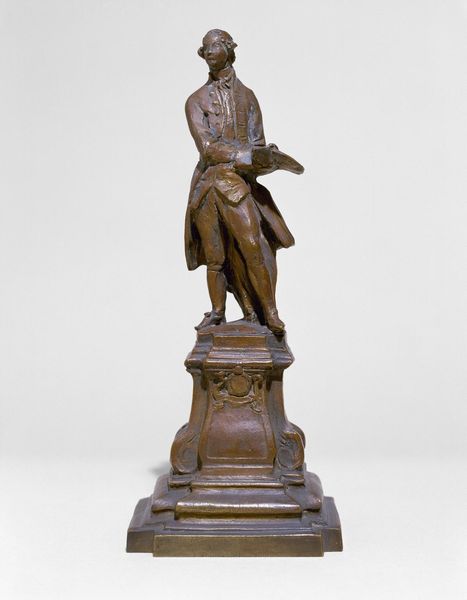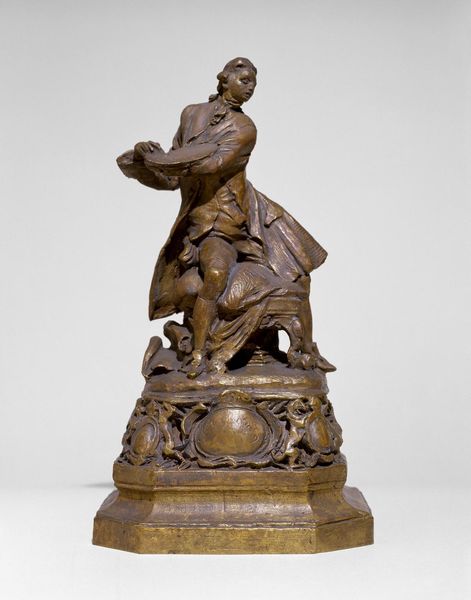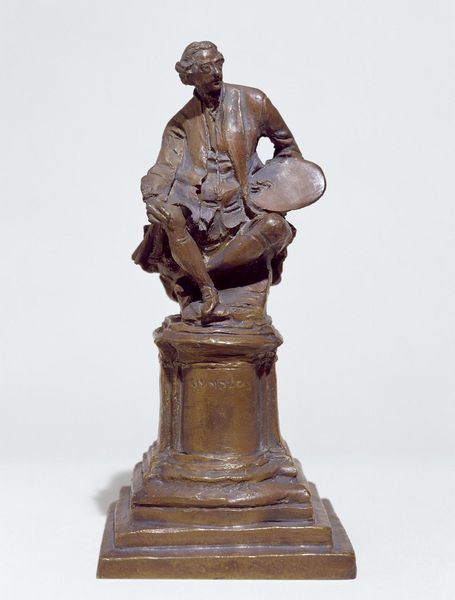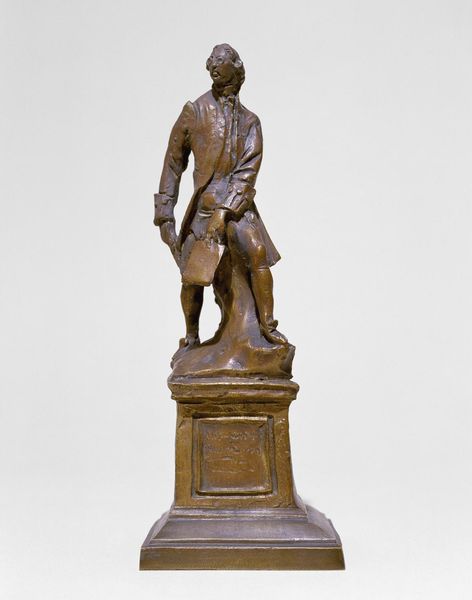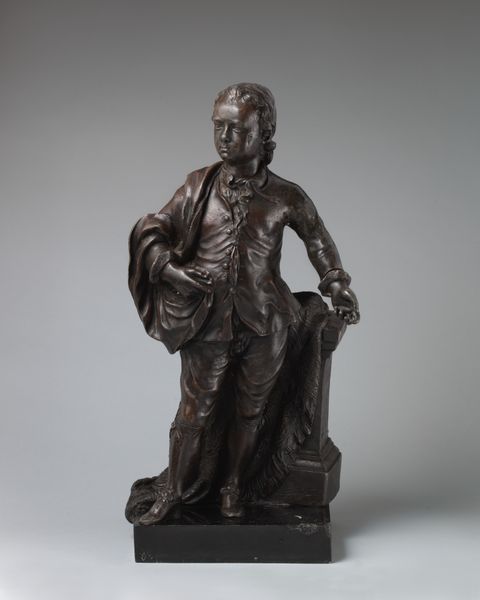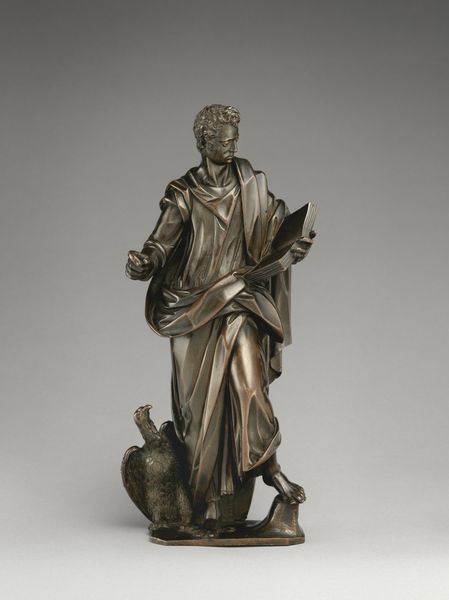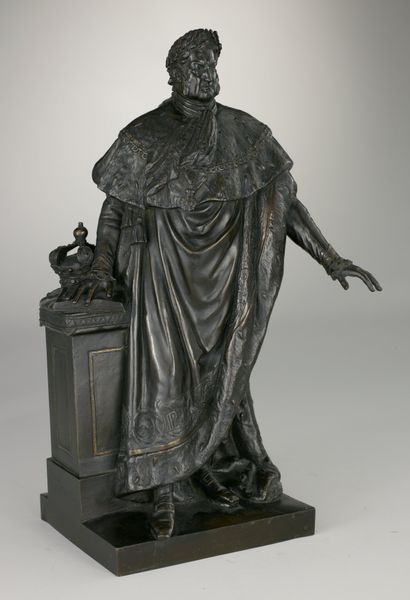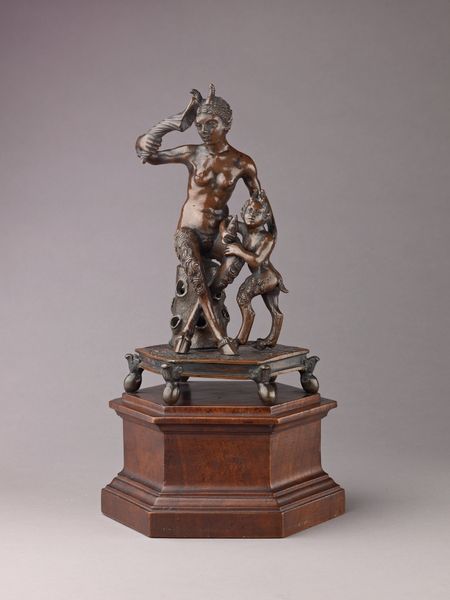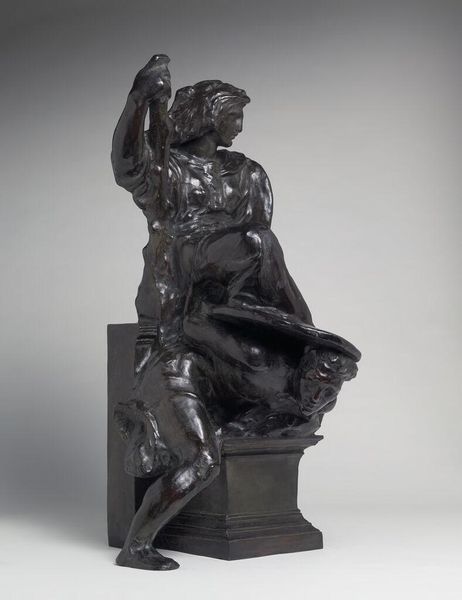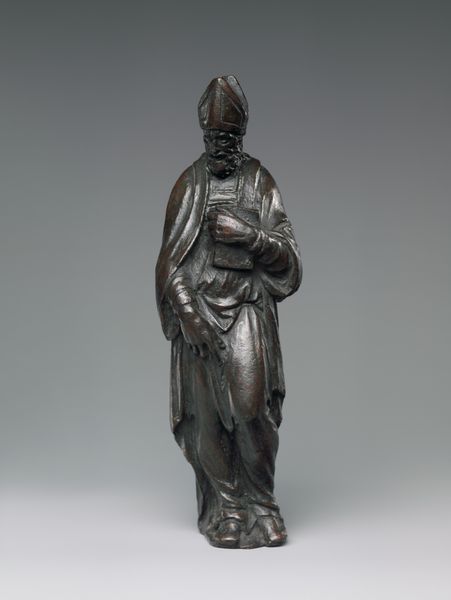![[title not known] by F. Derwent Wood](/_next/image?url=https%3A%2F%2Fd2w8kbdekdi1gv.cloudfront.net%2FeyJidWNrZXQiOiAiYXJ0ZXJhLWltYWdlcy1idWNrZXQiLCAia2V5IjogImFydHdvcmtzL2EwOTY3ZWRjLWMzNWEtNGRhOC05ZTZlLTkyOWRkYWM0YzJlMi9hMDk2N2VkYy1jMzVhLTRkYTgtOWU2ZS05MjlkZGFjNGMyZTJfZnVsbC5qcGciLCAiZWRpdHMiOiB7InJlc2l6ZSI6IHsid2lkdGgiOiAxOTIwLCAiaGVpZ2h0IjogMTkyMCwgImZpdCI6ICJpbnNpZGUifX19&w=3840&q=75)
Dimensions: object: 250 x 103 x 90 mm
Copyright: CC-BY-NC-ND 4.0 DEED, Photo: Tate
Curator: Here we have a bronze statuette of an unknown gentleman by F. Derwent Wood. It resides in the Tate Collections and its exact date is unknown. Editor: It strikes me as an assertive piece. That outstretched arm, the book clutched to his side – it’s all about presence, isn’t it? Curator: Yes, and consider the bronze itself. Its patina speaks of careful casting, skilled labour. These materials weren't cheap. This was a statement of wealth, a luxury item, regardless of the sitter's identity. Editor: The book is interesting. It isn't just a prop; it's a symbol of learning, knowledge, power, and access. The gesture implies authority, as if he’s delivering a pronouncement. Curator: And the pedestal grounds him, elevates him literally and figuratively, a constructed stage for constructed power. Editor: Seeing the figure presented this way gives us a view into what symbols were associated with prestige, class, and intellectual life at the time it was produced. Curator: Exactly. It's a fascinating study of how value is both made and perceived. Editor: A potent, material reminder of social hierarchies.
Comments
Join the conversation
Join millions of artists and users on Artera today and experience the ultimate creative platform.
tate 7 months ago
⋮
These eight maquettes (small preparatory models) were made for a statue of the eighteenth-century artist, Sir Joshua Reynolds, for the courtyard of Royal Academy’s home, Burlington House, in London’s Piccadilly. Only two sculptors, Derwent Wood and Alfred Drury, were invited to submit proposals. These studies by Wood show Reynolds in various poses, invariably holding a palette and painting brush, the tools of his profession. In the end the commission was given to Alfred Drury. The statue was put in place in 1931 and still stands outside the Royal Academy. Gallery label, September 2004
